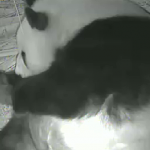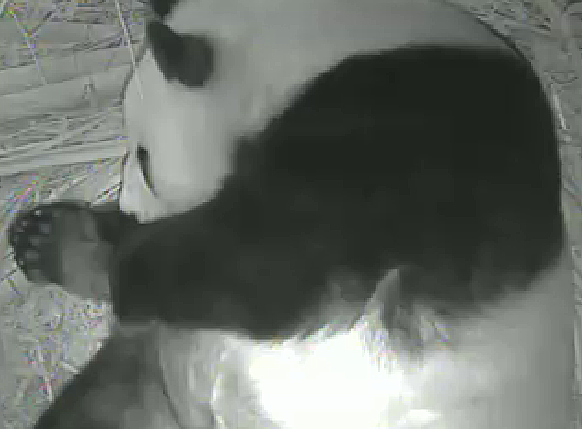

Giant pandas are renowned for their distinctive black-and-white pelage; for many, it’s hard to relate the squirmy, pink giant panda neonate to the iconic fluffy black-and-white of older panda cubs. However, this long-tailed pink phase doesn’t last long, and by two weeks of age, the black-and-white markings on the panda cub’s skin are typically fairly distinct and herald the onset of a whole suite of developmental changes.
Of course, in the days soon after birth, the most important developmental changes we look for are simply continued growth and signs of vigor. We assess these characteristics by looking for a full belly (see Panda Cub: Big Belly) and loud squawking vocalizations. Both of these traits are most evident when Bai Yun leaves the den.
But the change in skin color, presaging the development of true fur, is another exciting and important milestone to watch for. Beyond the inherent cuteness of panda cubs at this stage, it also serves as an announcement, to all of us, that the most fragile period in the cub’s life has passed. So keep your eyes peeled, and look for the subtle color changes in about a week. When I see that change, I will start to sleep a little easier!
Right now, Bai Yun has her little cub tucked neatly under her chin, and they are both resting calmly. It is a beautiful sight to see and makes it hard to believe how quickly things will change for both Mom and cub.
Megan Owen is a conservation program manager for the San Diego Zoo Institute for Conservation Research. Read her previous post, Panda Den Cam.